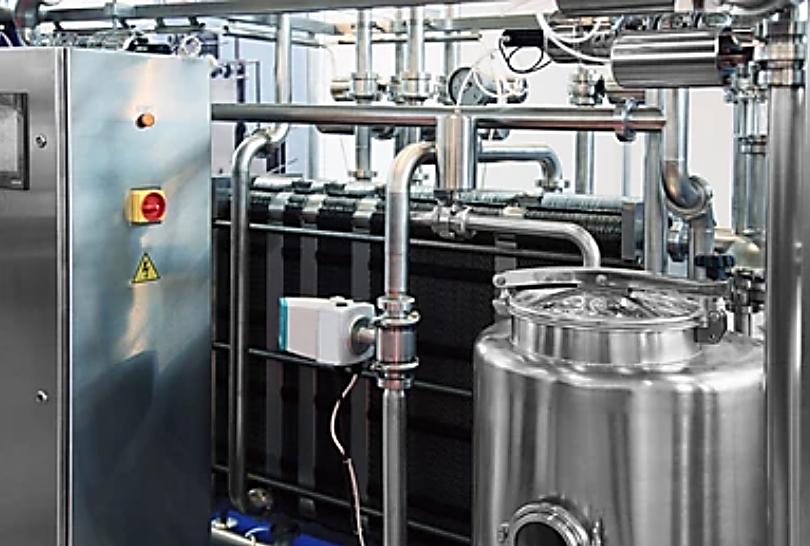Lifeasible has extensive experience in milk testing services and offers services to test alkaline phosphatase activity in milk and milk products.
Milk alkaline phosphatase is an enzyme found in milk. The technical significance of detecting alkaline phosphatase activity is that alkaline phosphatase is used as a marker to determine whether milk has been pasteurized to enhance the microbiological safety of milk products. In addition, alkaline phosphatase activity in raw cow's milk can be used to assess the health status of cows. This means that the alkaline phosphatase activity in raw milk can indirectly reflect the health of the milk-producing animal. Lifeasible assists in detecting alkaline phosphatase activity in milk and milk products and offers services that meet international standards for determining alkaline phosphatase activity.
 Fig. 1 Milk pasteurization systems.
Fig. 1 Milk pasteurization systems.
We offer three methods for the determination of alkaline phosphatase activity, the phenol release method, fluorometric method, and enzymatic photo-activated system (EPAS) method.
The method can determine alkaline phosphatase activity in milk powder, buttermilk, buttermilk powder, whey, and whey powder.
In this method, the sample requires dilution with a pH 10.6 buffer and then incubation at 37°C for 1 h. This treatment allows alkaline phosphatase to catalyze the release of phenol from disodium phenylphosphate. The released phenol reacts with quinoneimide (dibromoquinoneclorimide) to form dibromoindophenol, which can be measured at 610 nm.
Operation flow:

Main reference standard:
ISO 3356:2009
The method can determine various kinds of milk and milk products from cows, sheep, and goats. It can be used to determine alkaline phosphatase activity in liquid milk (including raw and heat-treated whole milk, semi-skimmed milk, skimmed milk, and flavoured milk), milk powder, and cheese.
The alkaline phosphatase activity based on this method is determined by a continuous fluorescence direct kinetic assay. A non-fluorescent aromatic monophosphate substrate, 2'-[2-benzothiazolyl]-6'-hydroxybenzothiazole phosphate, is hydrolyzed in the presence of alkaline phosphatase to yield a highly fluorescent product. The advantage of this method is that the determination can be done faster. Instrumental determination can be performed in less than 3 min at 38°C.
Operation flow:

Main reference standards:
ISO 11816-1:2013
ISO 11816-2:2016
Enzymatic photo-activated system (EPAS) method
This method applies to liquid milk and milk products, including whole milk, semi-skimmed milk, skimmed milk, and flavoured milk. Principally, milk from cows, sheep, buffalo, and goats and their liquid products can be tested by this method.
The method determines alkaline phosphatase activity by measuring the photo-activated substance produced by the hydrolysis of a stable aromatics dioxetane-phosphate substrate. The apparatus used for the determination is light-activated. The hydrolysis reaction needs to be stopped before measurement.
Operation flow:

Main reference standard:
ISO 22160:2007
Alkaline phosphatase activity cannot be used to access whether equine milk or camel milk is properly pasteurized. Inactivation of certain enzymes may be more suitable than alkaline phosphatase for validating pasteurization conditions in non-bovine breeds of milk. If you need to detect equine milk or camel milk, please contact us for a customized solution for your milk testing.
Lifeasible provides professional services for testing alkaline phosphatase activity in milk and milk products. We look forward to cooperating with you!
References
Lifeasible has established a one-stop service platform for plants. In addition to obtaining customized solutions for plant genetic engineering, customers can also conduct follow-up analysis and research on plants through our analysis platform. The analytical services we provide include but are not limited to the following:
STU-CRISPR System Improves Plant Genome Editing Efficiency
April 19, 2024
Application of Exosomes in Facial Beauty
April 12, 2024